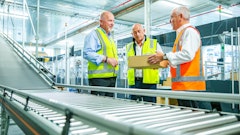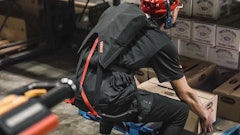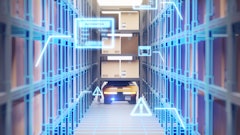
A quick look around shows exactly how warehouse automation has emerged as a transformative force in the world of supply chain management. Although the rise of AI and robotics have been making waves for years now, disruptions of COVID-19 magnitudes have ushered in a “new normal” and brought on a quest for companies to dive deeper into solutions that drive efficiency. Predictive analytics, demand forecasting, inventory management and visibility data continue to become more streamlined practice that the warehousing sector must adopt to remain competitive.
Where Humans and Technology Mix
Robots, AI, automation, oh my! Warehousing today looks a lot different than it did 20 years ago. But what about 3 years ago? Pushing technology to its brink, the pandemic brought on a need for speed, adaptability and resource that extended well into the warehousing space. Nilay Parikh, CEO at Arvist, explains that automation has become more accessible since the surge and found as commonplace where they may have not been considered before. For example, "The integration of robots into warehouse operations has had a profound impact on the industry, enabling faster order fulfillment, accurate inventory tracking and reduced labor costs. These robots are not only capable of carrying out repetitive tasks with precision but also collaborating seamlessly with human workers, which will be key to making progress towards true automation in the future," says Parikh. "With labor shortages becoming widespread in the warehousing space, the need for heightened efficiencies using temporary workforce becomes very important."
Because of the implementation of such technologies in this space, the workforce continues to be nimble and quick to adopt new processes that integrate with the technology. Kelton Kosik, head of supply chain at Ware2Go, says automation in the supply chain is not about replacing humans with robots but rather embracing how automation can uplevel the capabilities of the human hand— looking for ways to keep up with growth and volume while helping to scale merchants’ businesses quickly and profitably. The (near) future of warehouses, Parikh describes, will see AI/Robotics and humans coexist and that means the skillset required for employees working alongside technology moves from pure labor-intensive work to more intellectual. Decision-making and new ways of problem solving will be a requirement, as there will be fewer employees than before, with expectations of even higher throughputs.
"In order to keep up with the innovation in the supply chain, supply chain leaders must prepare talent to be open and ready for change. When working with technology in such a fast-paced and complex industry like the supply chain, workers are tackling things that have never been done before through a lot of trial and error using resources and budget when testing resolutions. To keep budget and resources intact, being detail-focused and having a problem-solving and open mindset are essential skills in order for workers to be successful." says Kosik.
Robotics, RFID and AI
And it's not just AMRs and AI leading the revolution either. Other advancements have been made to simplify inventory and maintain visibility and tracking— a feat becoming increasingly in demand across the supply chain, including with consumers. Dean Frew, CTO and SVP of RFID solutions at SML Group, says RFID is one technology that can underpin the automation of warehouse processes— delivering high levels of inventory accuracy.
"Demonstrating next generation scanning capabilities, RFID instantly scans items at entry and exit points of warehouses, allowing organizations to automatically keep track of items throughout their supply chain journeys," explains Frew. "Additionally, innovations like AI, machine learning (ML) and robotics are enabling businesses to further enhance their automation capabilities in tandem with the technologies already deployed. Today, AI systems are basing algorithms on poor-quality data. RFID solutions are a key part of new AI ecosystems and extend the investment that is being made in AI, robotic and enterprise systems creating a smarter and more efficient warehouse."
Warehouse automation has become a cornerstone of modern supply chain management, offering a multitude of benefits, including increased efficiency, accuracy, cost savings, scalability and safety. However, it also poses challenges related to high initial costs, technological complexities and potential job displacement. "In many cases, the biggest drawbacks of automation adoption are in underestimating the complexity of integration. Different solutions from various companies (think robots, conveyors, forklifts, AI solutions, IoT sensors and more) need to work seamlessly with each other in addition to integrating with existing solutions like warehouse management system databases and other ad hoc solutions different teams might have installed," says Parikh.
With automated processes comes the understanding of setpoints inventory, products, etc. that allow for the automation to work. Kosik uses the example of specific labeling requirements on inbound goods that drive automated put-away of products. Standardized labeling, case dimensions and other similar attributes enable automated processes, but also create the need for merchants to shift their manufacturing processes or co-packing to account for these needed changes, explains Kosik — increasing the necessity of flexibility with upstream partners.
What's Next
To succeed, companies must carefully evaluate the suitability of automation for their operations, invest in the right technologies and ensure seamless integration with their supply chain systems. Parikh says companies need to ensure that they are enhancing their entire infrastructure as they bring in newer solutions. "The older the infrastructure, the more vulnerable it becomes. Advanced backup systems and cybersecurity measures are already becoming top priority items for IT teams in these warehouses," says Parikh. "With redundancy systems, maintenance protocols and future advancements in technology, we can look forward to a future where robots work seamlessly alongside humans, creating a more efficient and effective system."
Recent supply chain disruptions may have highlighted the critical role of automation in building resilient supply chains in the post-pandemic world, now it's time to build on the foundation and solidify practices that foster growth in a new age of warehousing.



























